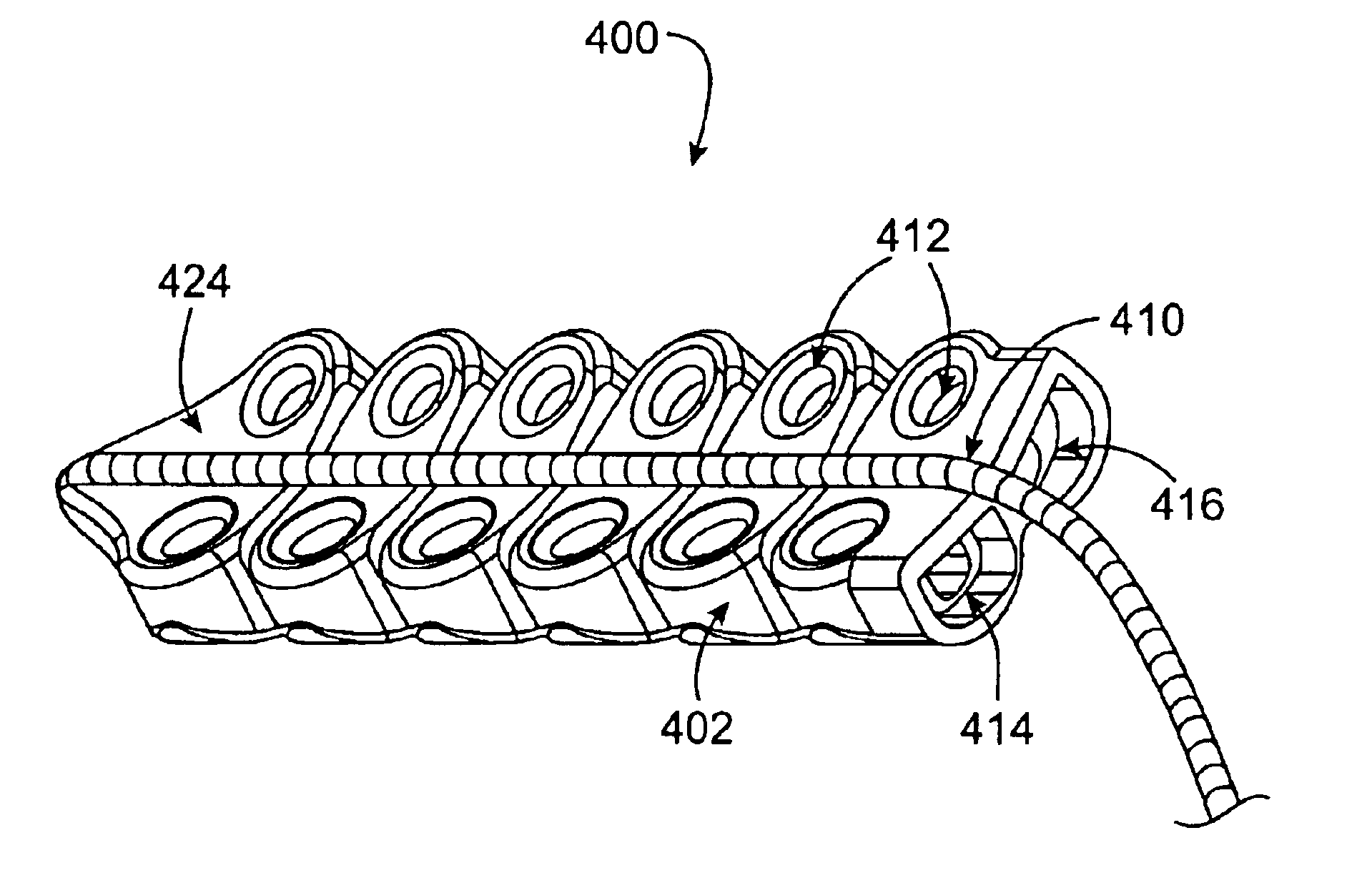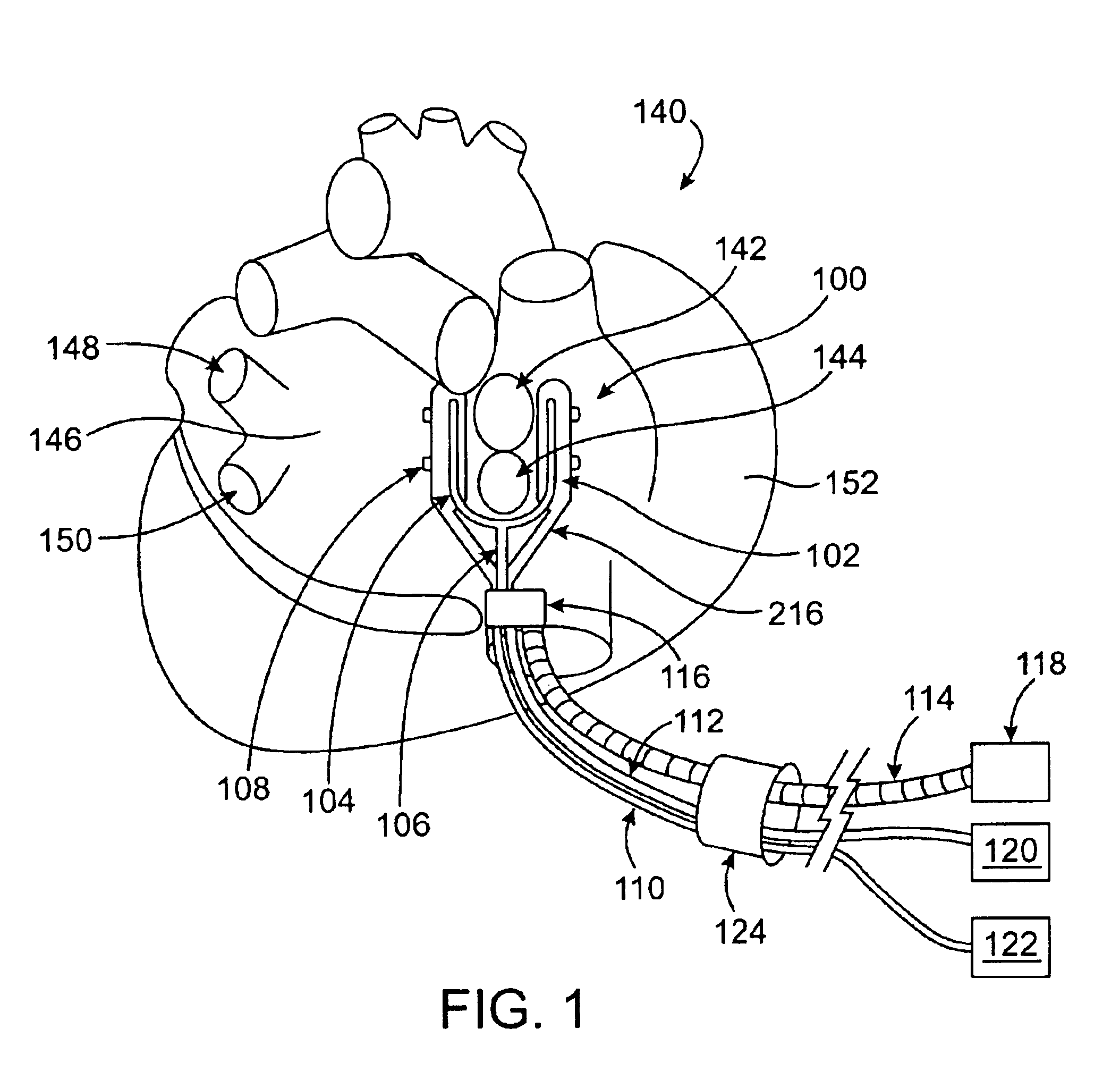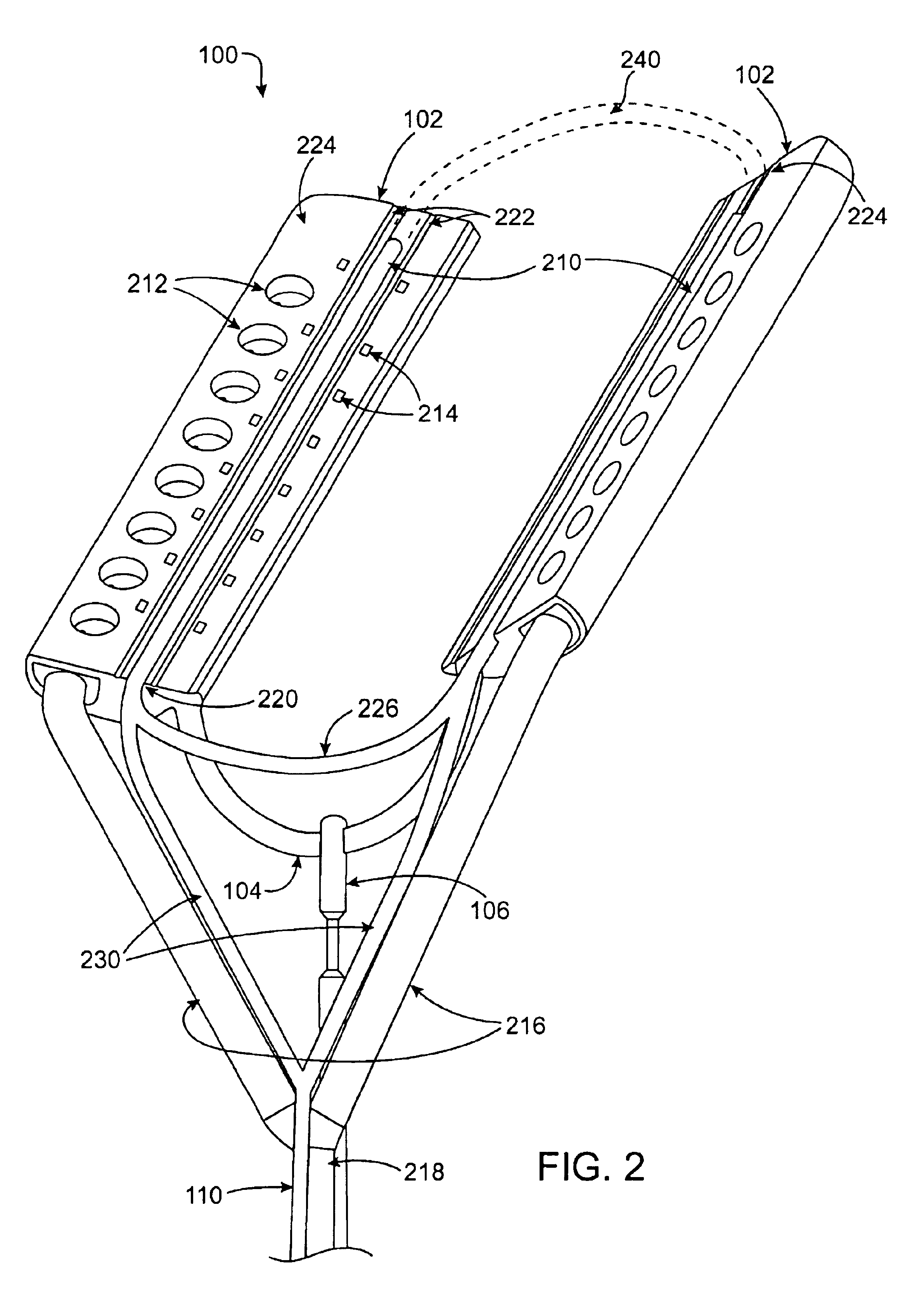Cardiac ablation devices and methods
- Summary
- Abstract
- Description
- Claims
- Application Information
AI Technical Summary
Benefits of technology
Problems solved by technology
Method used
Image
Examples
Embodiment Construction
The present invention relates generally to medical devices and methods and more specifically to devices and methods for ablating cardiac tissue for treating cardiac arrhythmias such as atrial fibrillation. Ablation of cardiac tissue in various patterns has been shown to disrupt conduction pathways in the heart to ameliorate or eliminate AF or other arrhythmias. The devices and methods will often be used to ablate epicardial tissue in the vicinity of at least one pulmonary vein, but various embodiments may be used to ablate other cardiac tissues in other locations on a heart.
Generally, ablation devices of the invention include at least one tissue contacting member for contacting a portion of the epicardial tissue of a heart, securing means for securing the ablation device to the tissue and at least one ablation member coupled with the contacting member for ablating at least a portion of the tissue. In various embodiments, the devices have features which enable the device to attach to...
PUM
 Login to View More
Login to View More Abstract
Description
Claims
Application Information
 Login to View More
Login to View More - R&D
- Intellectual Property
- Life Sciences
- Materials
- Tech Scout
- Unparalleled Data Quality
- Higher Quality Content
- 60% Fewer Hallucinations
Browse by: Latest US Patents, China's latest patents, Technical Efficacy Thesaurus, Application Domain, Technology Topic, Popular Technical Reports.
© 2025 PatSnap. All rights reserved.Legal|Privacy policy|Modern Slavery Act Transparency Statement|Sitemap|About US| Contact US: help@patsnap.com



